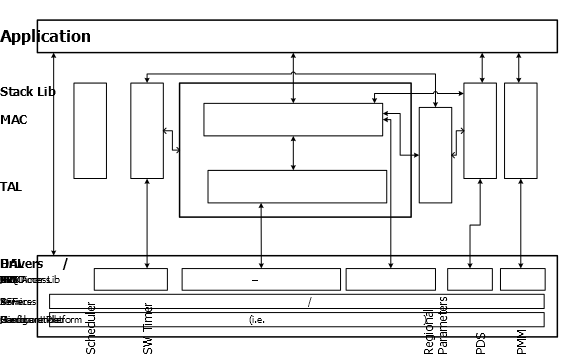The following figure shows the architecture of the MLS LoRaWAN stack and application.
Figure 1. Architecture of MLS Stack


- 1.The MAC Layer provides the functionality of operations defined in the LoRaWAN Specification.
- 2.The TAL layer uses the radio drivers and provides access to the transceiver.
- 3.The radio drivers use the SPI, GPIO and IRQ to communicate with the Semtech Radio Transceiver.
- 4.The MLS stack supports multiple regional bands. Provision is provided to enable or disable the supported bands in the stack. The regional parameters are provided outside the library to optimize the RAM and the Flash memory based on the requirement.
- 5.The PDS stores the LoRaWAN parameters in the Flash. This feature is mainly used to restore the data between the power cycles.
- 6.The PMM helps to reduce the power consumption by putting the processor into Sleep mode when the stack is in Idle mode.
- 7.The system has a non-preemptive priority based Scheduler, which does scheduling for the MAC, TAL, PMM, PDC, Timer and application sub systems.
- 8.The ASFv3 provide drivers or services for the interfaces such as, I2C, SPI, GPIO, and UART.
- 9.The hardware timer library is a library package that is used to produce a 1 µs (1 MHz frequency) tick.
- 10.The software timer services all the timer requirements for the stack, using Hardware timer TC0.